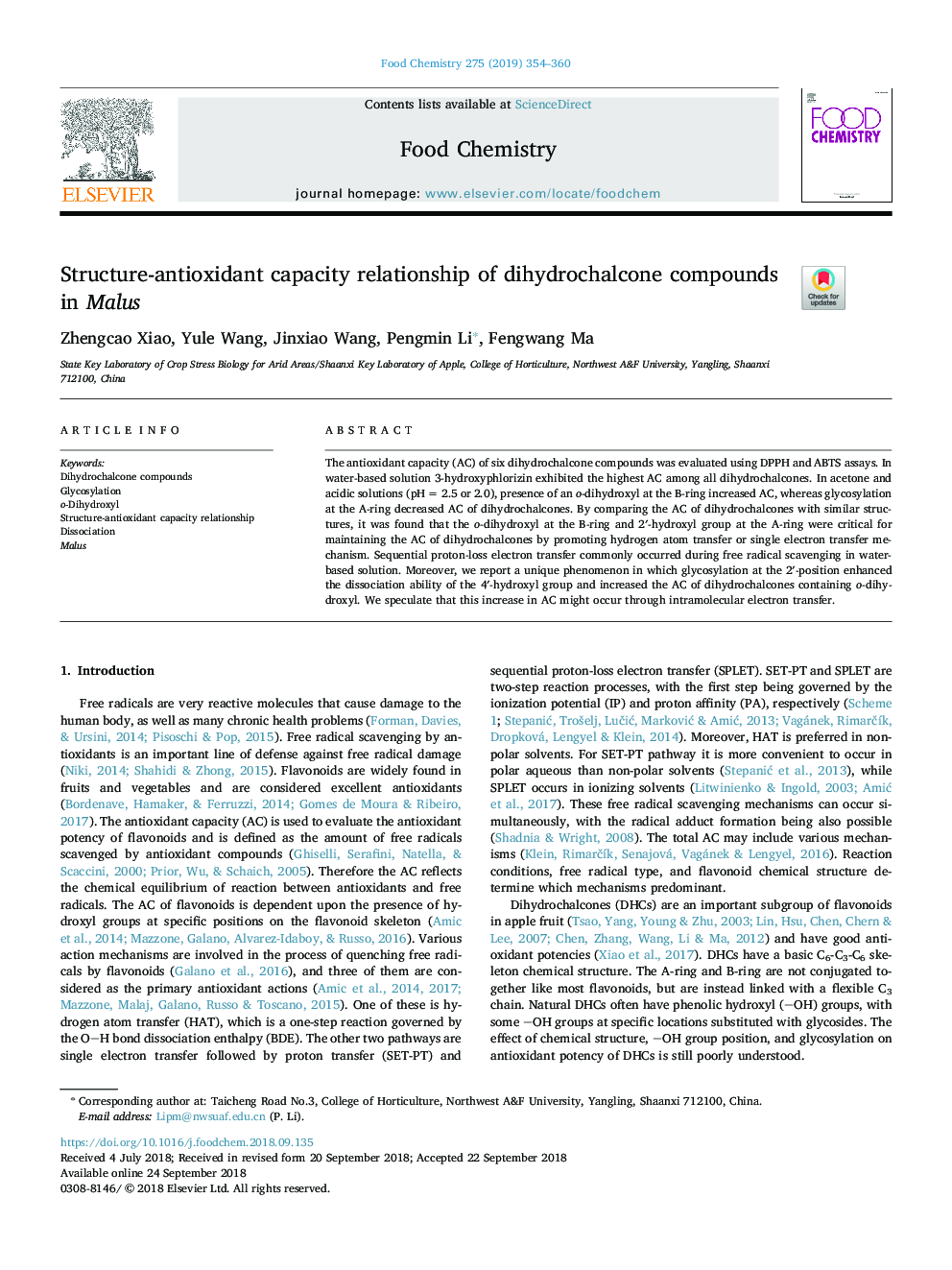| Article ID | Journal | Published Year | Pages | File Type |
|---|---|---|---|---|
| 11027402 | Food Chemistry | 2019 | 7 Pages |
Abstract
The antioxidant capacity (AC) of six dihydrochalcone compounds was evaluated using DPPH and ABTS assays. In water-based solution 3-hydroxyphlorizin exhibited the highest AC among all dihydrochalcones. In acetone and acidic solutions (pHâ¯=â¯2.5 or 2.0), presence of an o-dihydroxyl at the B-ring increased AC, whereas glycosylation at the A-ring decreased AC of dihydrochalcones. By comparing the AC of dihydrochalcones with similar structures, it was found that the o-dihydroxyl at the B-ring and 2â²-hydroxyl group at the A-ring were critical for maintaining the AC of dihydrochalcones by promoting hydrogen atom transfer or single electron transfer mechanism. Sequential proton-loss electron transfer commonly occurred during free radical scavenging in water-based solution. Moreover, we report a unique phenomenon in which glycosylation at the 2â²-position enhanced the dissociation ability of the 4â²-hydroxyl group and increased the AC of dihydrochalcones containing o-dihydroxyl. We speculate that this increase in AC might occur through intramolecular electron transfer.
Keywords
Related Topics
Physical Sciences and Engineering
Chemistry
Analytical Chemistry
Authors
Zhengcao Xiao, Yule Wang, Jinxiao Wang, Pengmin Li, Fengwang Ma,
